I had a couple of returning subjects that I could have used, and plans to try for something early this morning (about a half-hour from when this actually posts) that may or may not pan out, but I came across this one last night and knew I had my weekly subject.
First off, this was a weekly subject from last year, only back then I was doing the critters that I’d only ever photographed once, and what I’d featured had been taken 14 years before that.

That’s the shot from 2010, one of two frames that I got before it flew off. It was a shame, because they’re cool-looking little insects, but I’d never even spotted one since. Until last night, when after a couple of terrible frames in situ, I snagged it in a film can (ask your grandfather what that is) and brought it in for a studio session.
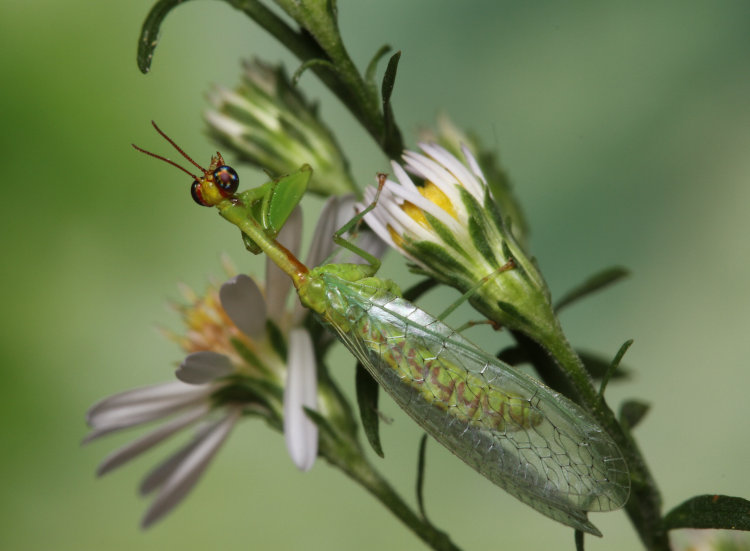
This is a mantisfly or mantidfly, most likely a green mantidfly (Zeugomantispa minuta,) perched on a sprig of frost aster (Symphyotrichum pilosum) that I plucked for something to be perched upon. You can see where it got its name from, since it looks like a cross between a lacewing and a praying mantis, but those mantis forelegs are not an indication of any relation to mantids; this is a member of the lacewing family, and the forelegs are simply convergent evolution. We’ll see them better in a minute.
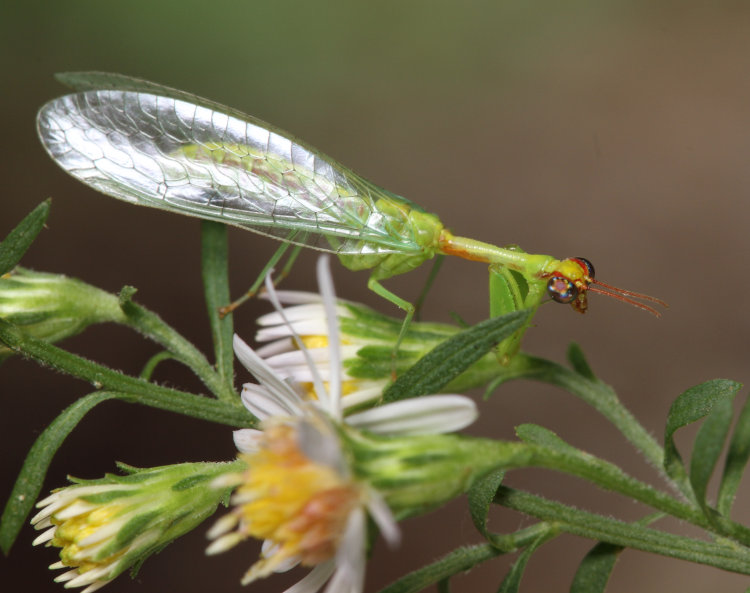
It’s also about lacewing size, a measured 12mm in body length, and I was lucky to realize what it was, since this means those forelegs require a very close observation to spot. It was dangling from a short stretch of spiderweb, and I thought that it had been captured, but it appeared to be there by choice and was not trapped at all. I’ve since found out that part of its chief diet is spider eggs, so likely it had actually discovered an egg sac suspended between branches and was polishing off the contents.
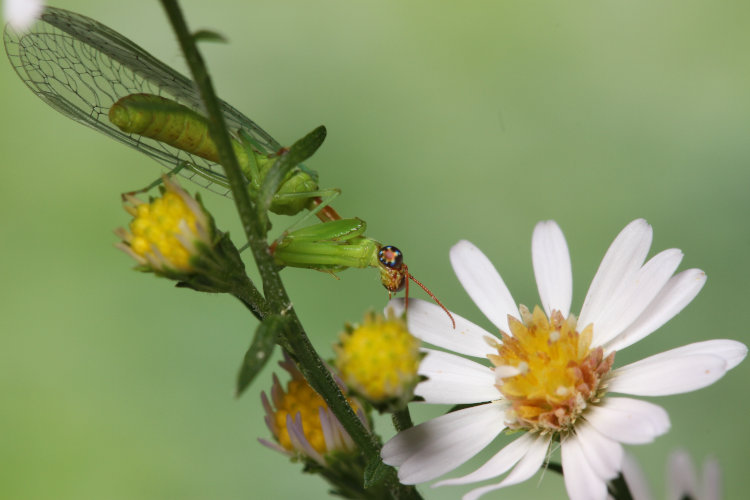
The fartsy shot with an open blossom – I just wish I hadn’t had that stray petal peeking in at the upper corner, but when you’re trying for sharp focus on something this size, you (or at least, I) don’t always notice everything.
These were all shot in the bathroom, since it’s a small space with very few hiding places, so if my subject here decided to fly off, the chances of locating it again were several dozen times higher than in the main part of Walkabout Studios. One of my prints serves as the backdrop, too far out of focus to do anything but provide appropriate color, and the sprig of frost aster is held in a clamp so I could rotate it as needed as the mantidfly wandered about. My model was very well-behaved, to its credit, except for failing to extend those forelegs for a better view – while in the studio, at least. Still, I could go in close.
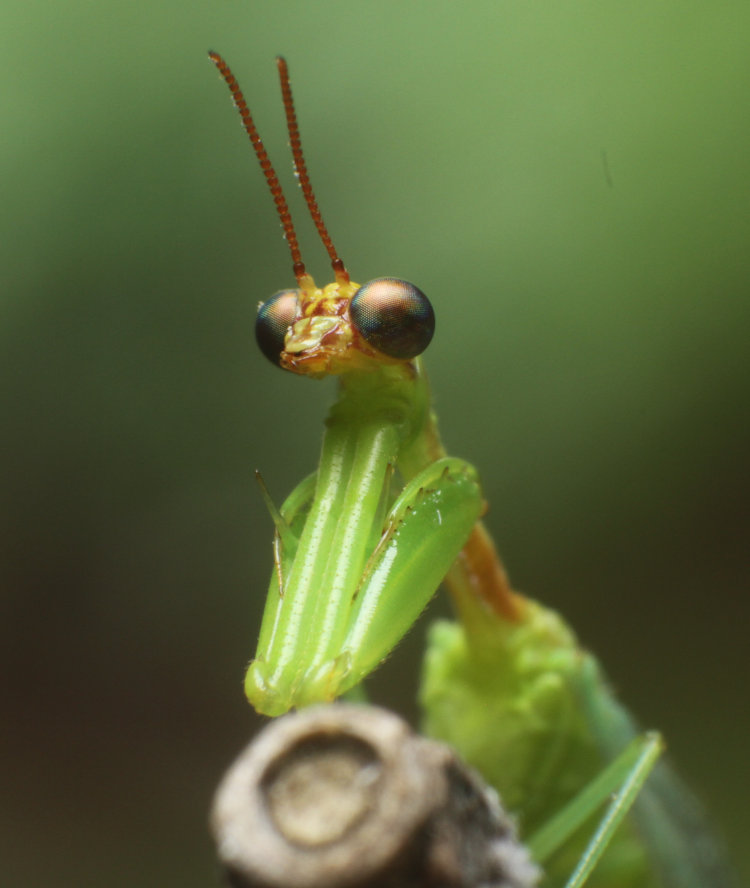
Now here’s the curious bit: Unlike the others, this frame was shot with the reversed 28-105, same rough f-stop, same lighting source, but the distinct colors of the eyes somehow got very muted, and I don’t understand why this is. The 28-105 allows me to get much higher magnification, but it’s not a dedicated macro and is, as I said, being used backwards, so there’s some optical effect going on here – I just don’t know what. Compare it to the Sigma 180mm macro, which didn’t get in as tight, but produced a distinctly different effect with the eyes.
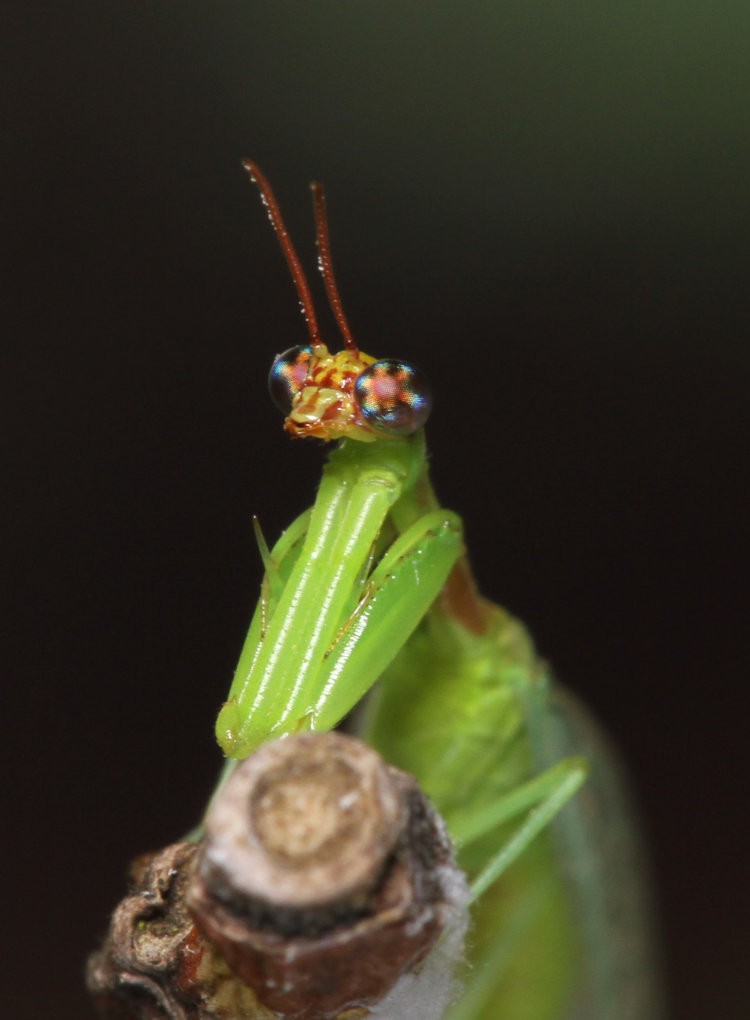
Now, this might be due to the much-greater working distance, which also applied to the flash softbox, but I can tell you that that starry, multi-colored effect was clearly visible to the naked eye. You can also see that the forelegs fold differently than a praying mantis, backwards and folding the same way for both joints rather than forward and reversing, ‘zig-zag’ like a mantis. The antennae are also surprisingly short.
By the way, the property here at Walkabout Estates Plus has seen a surge of blue mistflowers, and I plucked a sprig to use as the perch, thinking the pale blue-lavender color would make for great contrast to set off the mantidfly. Said mantidfly was having none of this, though, and when I attempted to coax it from the film can onto the flowers, it resolutely refused to even set foot on them and remained on the film can. Thankfully I had better luck with the frost aster, but what the issue was, I have no idea. Perhaps it just felt those clashed too much…
I kept the camera in hand when I released my subject and, sure enough, the mantidfly extended its forelegs a few times, so I snagged a couple of frames of that.
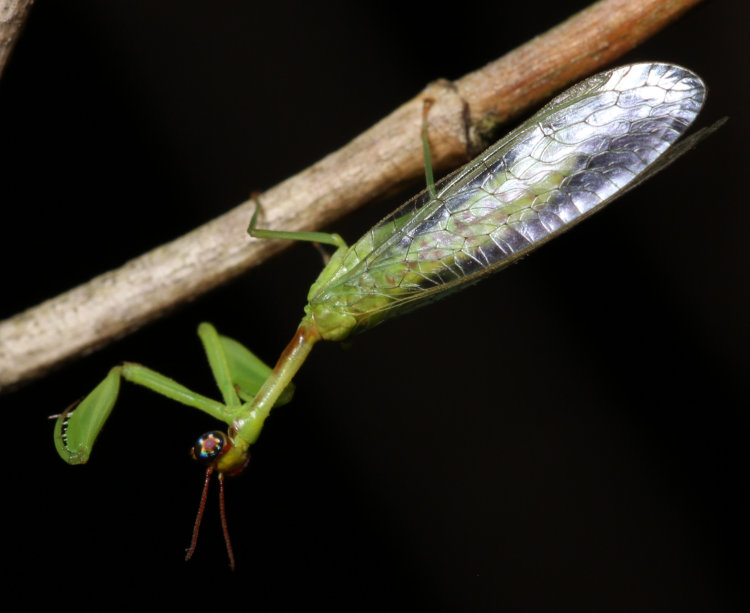
You get a glimpse of the serrated, ‘toothy’ edges, but then, here they seem to fold like the legs of the praying mantids. I went back and looked at the other images, and they definitely look to be folded differently. The best I can conclude is the articulation of those forelegs is astounding – makes me wish I’d been set up to do video, but out in the field this is extremely tricky at macro magnifications, and as I said, in the studio the mantidfly wasn’t showing off at all. Now it seems I have a new goal…



















































